Chapter 3: 1925 - 1930
Danish radio production established in Kolding
After separating Solar's metre activities in Dansk Målerværksted, CEO Jacob Jørgensen changes the business foundation of Nordisk Solar Compagni in 1925 into "manufacturing and whole sale of electrical articles and radios".
With a keen interest, Jacob Jørgensen has observed how the people's interest in radio reception has increased since the first tests in 1923. And as a range of government radio stations, led by the British BBC, is established in Europe, the visionary merchant has no doubt that broadcasting is going to become an electronic mass media. Jacob Jørgensen is sure that the radio quickly will become widespread and a common household item, just like electricity.
Busy business in Haderslevgade
A lot has happened since Nordisk Solar Compagni was established on the first floor of Rendebanen 6 in Kolding in 1919. The explosive growth has already resulted in a change of location two times. And even though the fancy address in Haderslevgade has provided some extra space, it’s still necessary to rent additional warehouses on two separate locations in the city.
The new modern and electrified world fascinates everyone and especially gets its hold on major cities. Solar also feels the increasing demand as it is no longer enough to make just a single package run to the train station.
The first roving sales representative of the company N.C. Jehrbo is a persistent man who only adds to the bustle. Jehrbo travels far and wide. He is trustworthy and with his competent guidance and reliable appearance, many remote electrical contractors are able to put a face on Solar. New customers roll in and the daily amount of orders increases with an unprecedented speed.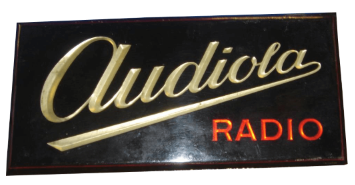
Audiola Radio logo
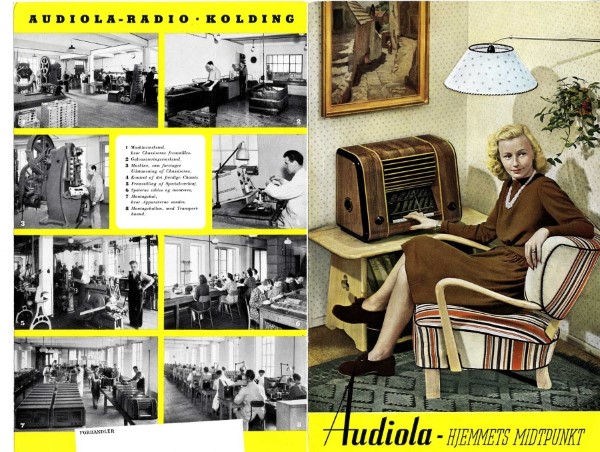 Danish Audiola Radio ad branding the radio as the center of the home
Danish Audiola Radio ad branding the radio as the center of the home
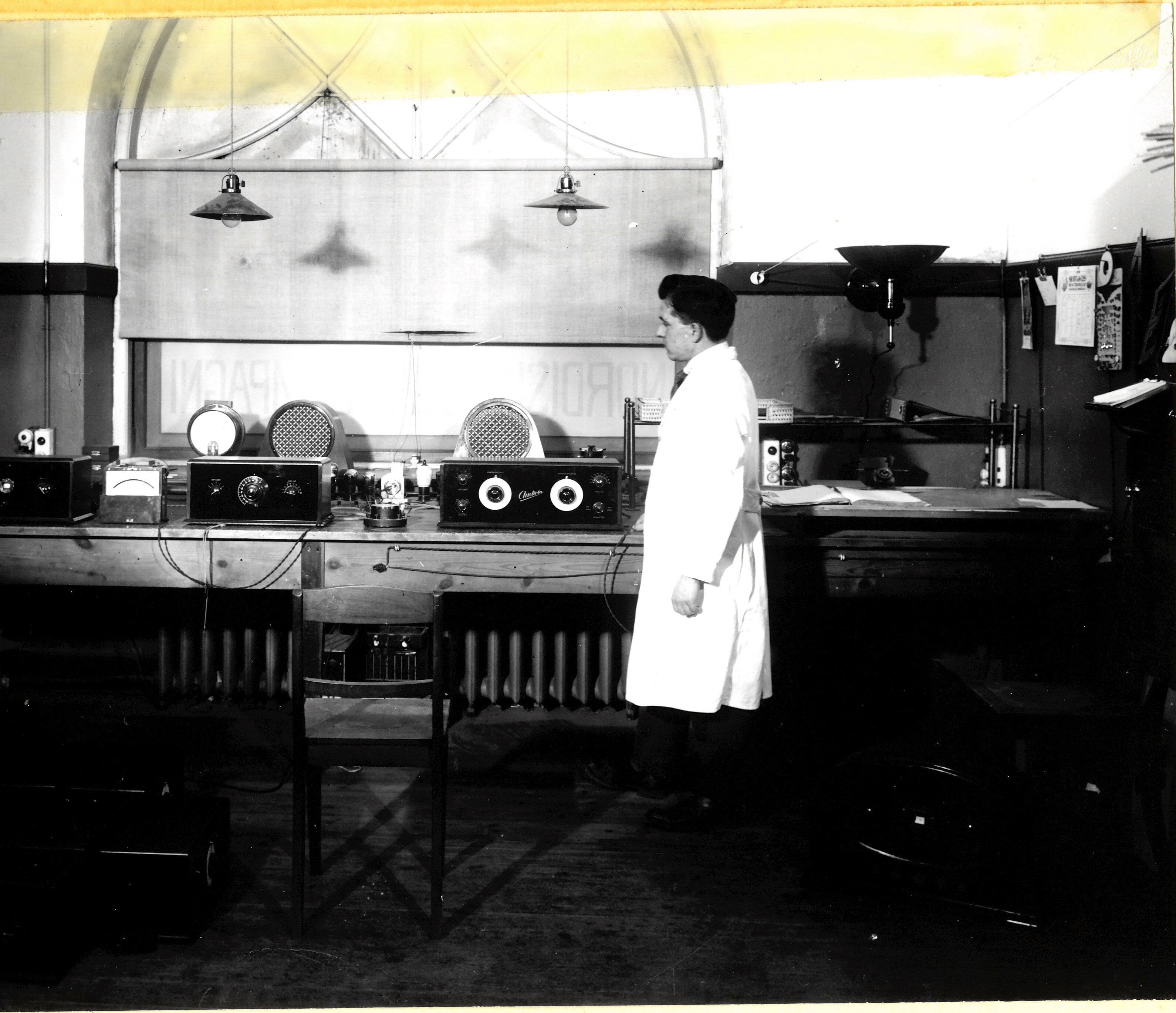
Audiola Radio production in 1930
Radio production – a new era
In 1924, next to motor vehicles, radio reception is the best-covered theme in the press at the time. Nordisk Solar Compagni procures a range of radio components, which are sold to DIY builders, and Jacob Jørgensen decides to look into his options for manufacturing radios. Not a minute goes by before blowtorches and soldering irons are bought. After experimenting for a few months together with the skilled local telegraph operator Meyer, Jacob Jørgensen and his two employees Johs Olesen and N.C. Jehrbo succeed in putting together two functioning prototypes in the fall of 1924.
At this point, Jørgensen is actually ready to start production and fuelled with hope, he awaits the government’s official announcement about awarding the Danish Broadcasting Corporation a broadcasting license. When that finally happens on April 1 1925, Nordisk Solar Compagni sets off their production of radios under the name Audiola.
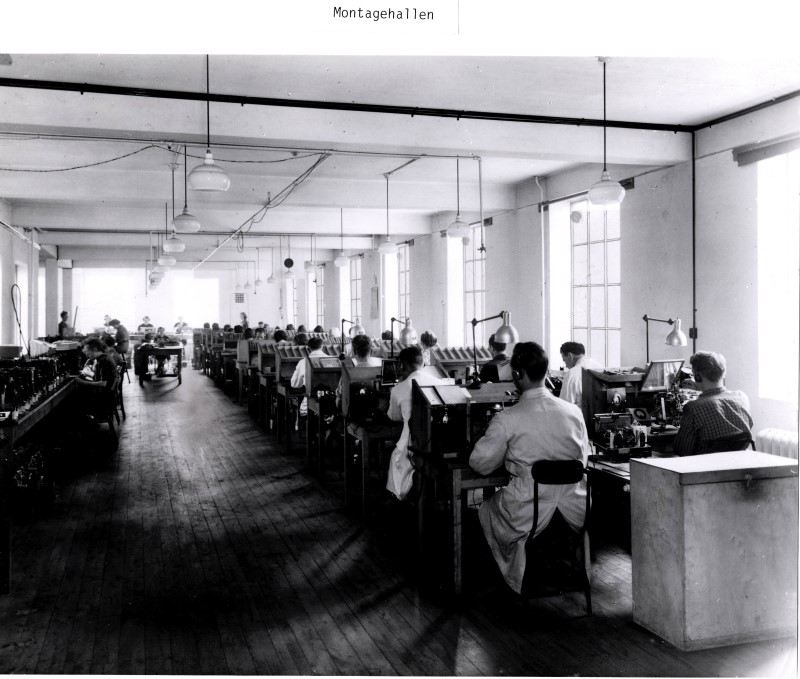
Audiola radio production in 1942
The enthusiastic Jehrbo comes up with the name, which is a contraction of the Audion lamp and the American radio factory Radiola. Johs Olesen is appointed Supervisor and is responsible for managing the actual production. Engineer S. Lindberg is hired to be in charge of development.
In 1926, Nordisk Solar Compagni releases the first receiver, ”4 lamps Audiola de Luxe”. The device costs DKK 160 (present value DKK 5,445) and is only sold as wholesale to electricians. While new models join the assortment, Audiola also starts manufacturing speakers.
Nordisk Solar Compagni who’s in charge of all marketing and sales of Audiola, publishes the first Audiola NSC catalogue in 1929. At the same time, Jacob Jørgensen prepares to export by having an English brochure made. In here, four radios and the NSC speaker is mentioned. 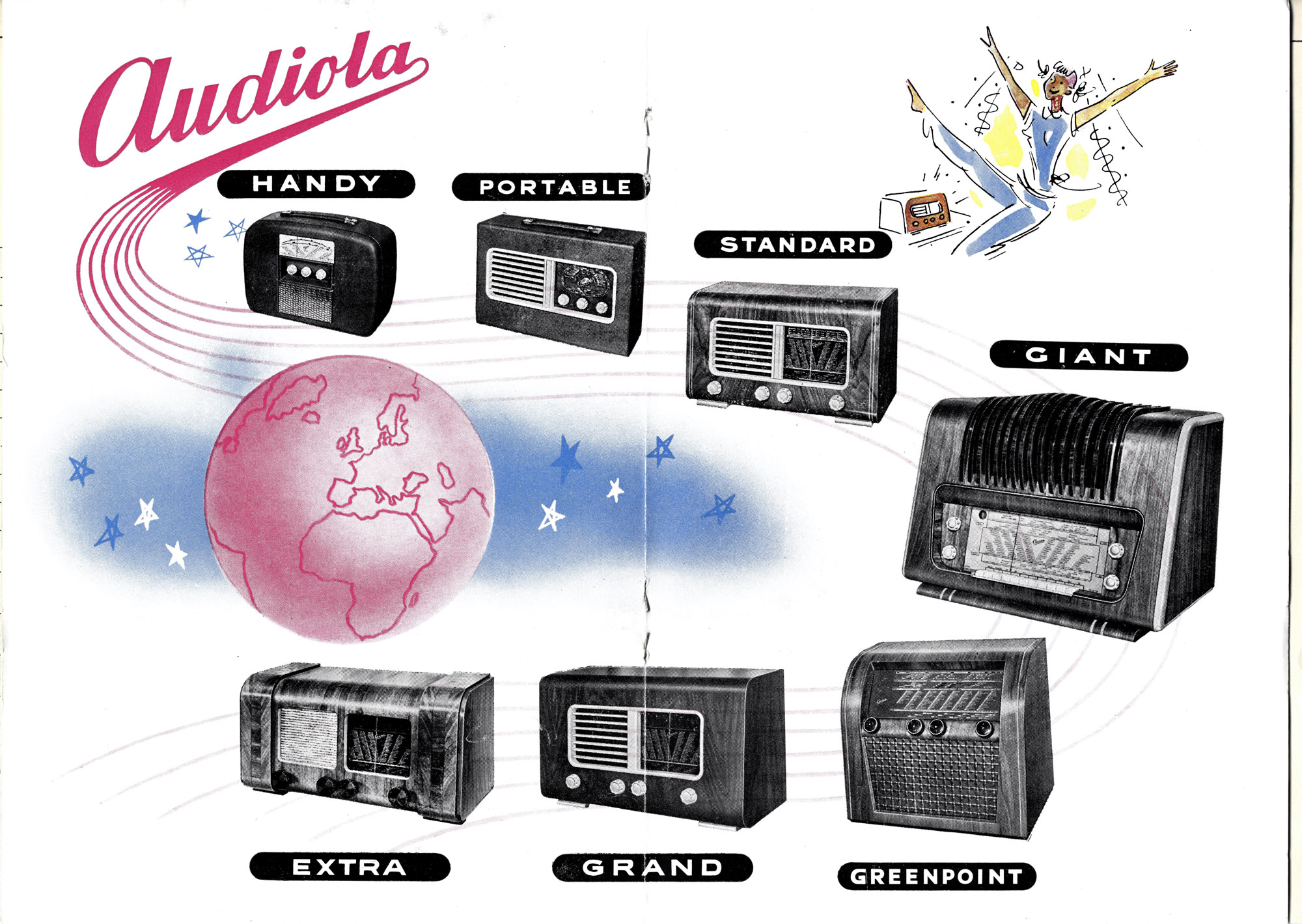
English Audiola brochure
The timing of Jacob Jørgensen’s venture in manufacturing radios is eminent. The number of listeners grows by the hour. In 1926, about 130,000 license-paying listeners are registered. In 1939, 80% of all Danish households own a radio.
The newly factory owner Jacob Jørgensen ambitiously states: “Audiola Radio shall not just keep abreast of the times. It shall develop and design models that mark the times”.
The first branches
As sales of both electrical materials and radios develop almost explosively at the same time, there’s an urgent need to expand the physical surroundings. In 1928, Solar buys a substantial part of the property named “Borgen” (the castle) in Haderslevgade and establishes a bigger workshop and warehouse. July 1 1929, Solar opens its first branch in Aarhus and just five months later, a branch in Nykøbing Falster follows.
Audiola Radio, 200 employees and a radio every 7th minute
Audiola Radio manufactures radios, speakers and gramophones until 1957. In the years 1926-1931, 15,000 devices are produced and during the period 1932-1942, production amounts to 60.000 devices.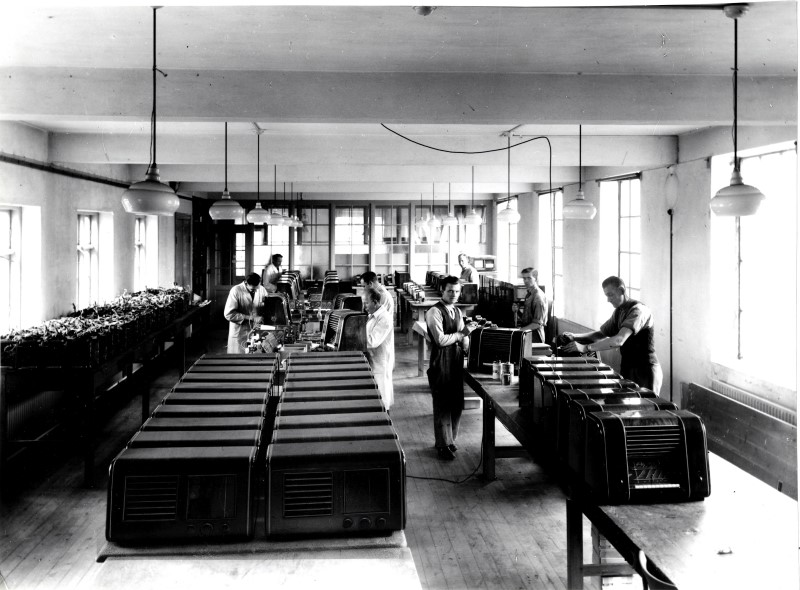
Audiola radio production in Haderslevgade, 1942
After Second World War, a fourth floor is built on top of the factory and production is slowly getting back up. In 1947, the factory is ready with an increased capacity. From the new assembly line, a radio is finished every 7th minute. In 1950, the factory employs about 200 employees and produces approx. 15,000 devices that year.
Audiola Radio achieves a market share of about 10% in Denmark and is considered a significant player in the Danish radio industry. Audiola Radio A/S generates significant export to ten countries in Europe and South America.
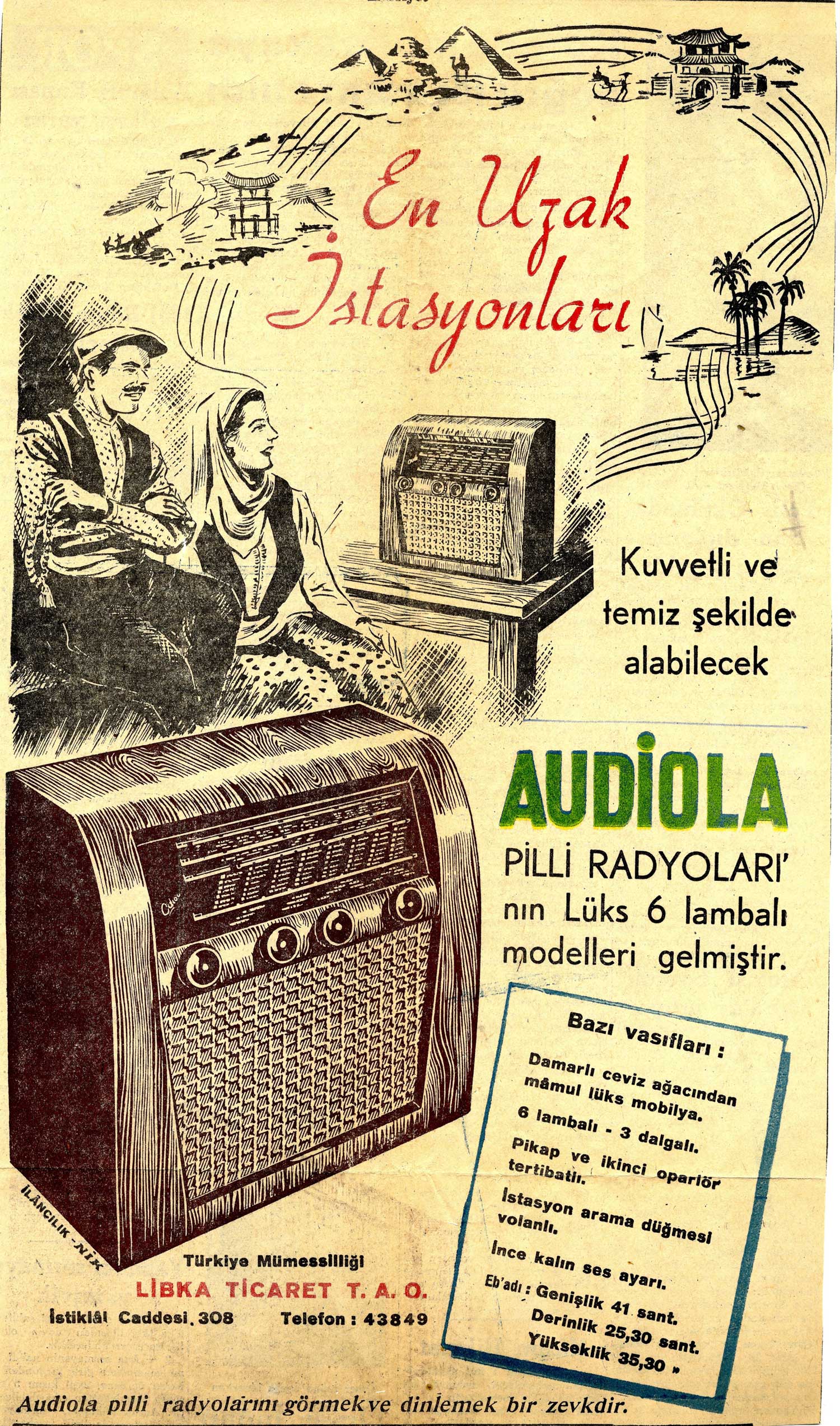
Turkish Audiola ad
From general partnership to public limited company
In December 1930, Nordisk Solar Compagni changes into a public limited company. The new company form strengthens Solar’s reputation as a well-founded Danish manufacturer and trade company in the eyes of both Danish and foreign business partners.
At the same time, Jacob Jørgensen manages to increase the company’s share capital so that there’s still room for investments and expanding Solar’s business activities. He plans to establish yet another manufacturing company.
Read more in the next chapter, which will be out 17 April 2019.
A blast from the past
Get a look behind the scenes of one of the earliest radio productions in Denmark. Here, we see the work in progress and a glimpse of "the castle" in the early Audiola days. Feel the history and spot Solar's founder Jacob Jørgensen take a closer look on a speaker.
CV – Jacob Jørgensen
Kolding 1930
Personal data:
Name: Jacob Lauritz Jørgensen
Date of birth: Born 17 January 1891
Place of birth: Sønderborg, which at the time belonged under Germany
Civil status: Married in 1918 to Marie Andersen, Vamdrup
Children: Harald Preben Jørgensen (06.01.1918) and Edith Jørgensen (20.01.1920)
Address: Strandvejen 9 in Kolding
Education and professional experience:
1905 – 1906: Ship’s boy at the German school ship Potosi
1906 – 1909: Trains to be a ship constructing architect at shipyards in Flensburg and Eutin, Germany
1909 – 1910: Employed with Blom & Vos, Hamburg, and a power station in Hamburg
1910 – 1912: Employed as a sales representative and metrology expert with Solar Zähler Werke, Hamburg
01.02.1912: Immigrates to Denmark and represents the English company Solar Works
21.07.1913: Founder and manager of Solar Elektricitetsmaaleren v/ Pedersen & Jørgensen
17.05.1919: Founder and day-to-day manager of Nordisk Solar Compagni, Jernbanegade 19, Kolding
12.12.1919: Receives trade license as merchant in Kolding
17.08.1920: Receives trade license as manufacturer in Kolding
01.12.1924: Establishes the company Dansk Målerværksted, Kolding
1926 - 1928: Chairman of the business network Kolding Fodsportsforening af 1915
1927: Honorary Consul to Germany in Kolding
1929: Member of the board of Kolding Sejlklub (yacht club)
1930: Managing Director of Aktieselskabet Nordisk Solar Compagni, Kolding
Personal interests and qualifications:
Interests: Family, horses and riding, ships and yachting
Languages: Masters Danish (with an accent), German and English in writing and speech
Merchant: Has a distinct sense for great business acumen, is innovative and an initiator